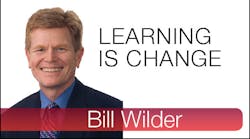There is a saying, alternately attributed to Buddha Siddhartha Guatama Shakyamuni and the Theosophists, that goes: When the student is ready, the teacher will appear. Regardless of who came up with it, I think it’s a key concept to keep in mind when talking about individual change management.
When you consider that change is learning and learning is change, a bedrock concept in successful change management, the teacher can make the difference. And when we say “when the student is ready, the teachers appears,” it should be clear that effective teachers are facilitators who make their impact by understanding the needs of the learner
Note the word facilitators – all education, and thus change, ultimately takes place on the student side. A teacher can light the way and ease the way – in other words, facilitate learning – but the learner has to walk the path.
In a way, teachers are like enzymes, Nature’s go-to facilitators of change. Essentially, enzymes are catalysts. They accelerate the rate of reactions. They make change happen faster.
Note that enzymes don’t create change in and of themselves. Rather, enzymes lower the threshold activation energy required for a reaction to proceed. Lower activation energy = vastly increased rate of change.
As you learned in school, enzymes do this without being consumed themselves. After catalyzing a change to the point where the system reaches equilibrium, having achieved an optimal state, enzymes figuratively step back and watch for new reactions to speed up.
When the biological conditions are right, the enzyme is there. When the student is ready, the teacher appears. Or, rather, the teacher has been there all along, like an enzyme, helping move things along when things need moving along and staying out of the way the rest of the time.
So what does this mean in practical terms?
Like an enzyme the facilitator is the catalyst of learning. They lower the energy required to learn by:
- Assessing and accessing the prior knowledge of learners
- Creating opportunities for learners to be self directed
- Making the learning relevant
- Establishing a positive and active learning environment
The teacher who appears when the student is ready is the teacher who is focused on the learner, constantly assessing when the learner is ready.




